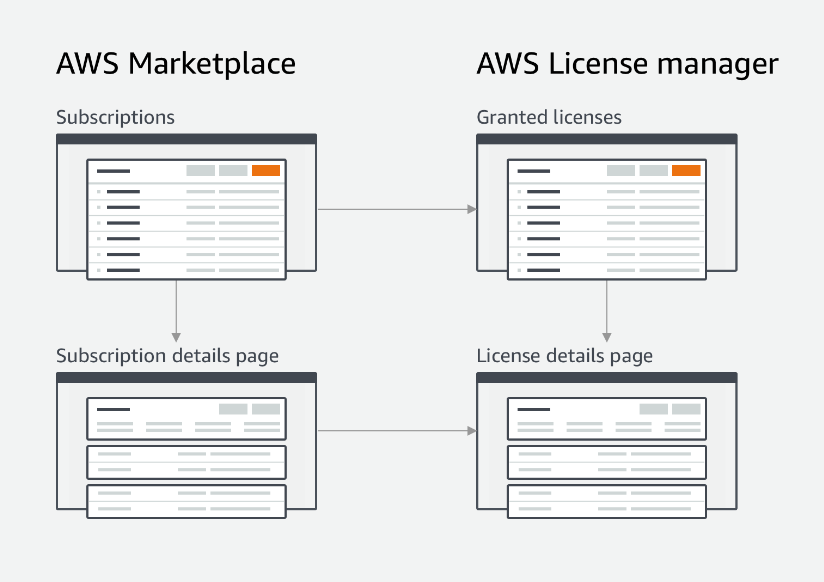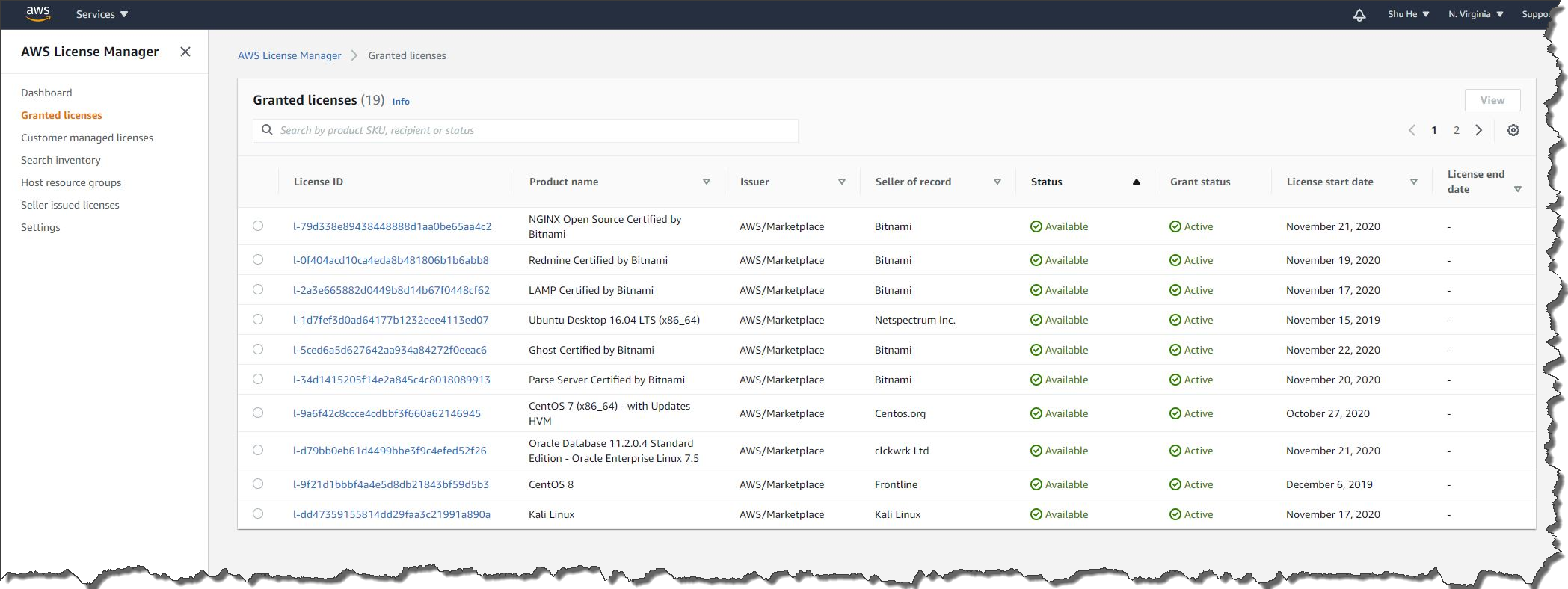Post Syndicated from Sébastien Stormacq original https://aws.amazon.com/blogs/aws/aws-weekly-roundup-savings-plans-amazon-dynamodb-aws-codeartifact-and-more-march-25-2024/
AWS Summit season is starting! I’m happy I will meet our customers, partners, and the press next week at the AWS Summit Paris and the week after at the AWS Summit Amsterdam. I’ll show you how mobile application developers can use generative artificial intelligence (AI) to boost their productivity. Be sure to stop by and say hi if you’re around.
Now that my talks for the Summit are ready, I took the time to look back at the AWS launches from last week and write this summary for you.
Last week’s launches
Here are some launches that got my attention:
AWS License Manager allows you to track IBM Db2 licenses on Amazon Relational Database Service (Amazon RDS) – I wrote about Amazon RDS when we launched IBM Db2 back in December 2023 and I told you that you must bring your own Db2 license. Starting today, you can track your Amazon RDS for Db2 usage with AWS License Manager. License Manager provides you with better control and visibility of your licenses to help you limit licensing overages and reduce the risk of non-compliance and misreporting.
AWS CodeBuild now supports custom images for AWS Lambda – You can now use compute container images stored in an Amazon Elastic Container Registry (Amazon ECR) repository for projects configured to run on Lambda compute. Previously, you had to use one of the managed container images provided by AWS CodeBuild. AWS managed container images include support for AWS Command Line Interface (AWS CLI), Serverless Application Model, and various programming language runtimes.
AWS CodeArtifact package group configuration – Administrators of package repositories can now manage the configuration of multiple packages in one single place. A package group allows you to define how packages are updated by internal developers or from upstream repositories. You can now allow or block internal developers to publish packages or allow or block upstream updates for a group of packages. Read my blog post for all the details.
Return your Savings Plans – We have announced the ability to return Savings Plans within 7 days of purchase. Savings Plans is a flexible pricing model that can help you reduce your bill by up to 72 percent compared to On-Demand prices, in exchange for a one- or three-year hourly spend commitment. If you realize that the Savings Plan you recently purchased isn’t optimal for your needs, you can return it and if needed, repurchase another Savings Plan that better matches your needs.
Amazon EC2 Mac Dedicated Hosts now provide visibility into supported macOS versions – You can now view the latest macOS versions supported on your EC2 Mac Dedicated Host, which enables you to proactively validate if your Dedicated Host can support instances with your preferred macOS versions.
Amazon Corretto 22 is now generally available – Corretto 22, an OpenJDK feature release, introduces a range of new capabilities and enhancements for developers. New features like stream gatherers and unnamed variables help you write code that’s clearer and easier to maintain. Additionally, optimizations in garbage collection algorithms boost performance. Existing libraries for concurrency, class files, and foreign functions have also been updated, giving you a more powerful toolkit to build robust and efficient Java applications.
Amazon DynamoDB now supports resource-based policies and AWS PrivateLink – With AWS PrivateLink, you can simplify private network connectivity between Amazon Virtual Private Cloud (Amazon VPC), Amazon DynamoDB, and your on-premises data centers using interface VPC endpoints and private IP addresses. On the other side, resource-based policies to help you simplify access control for your DynamoDB resources. With resource-based policies, you can specify the AWS Identity and Access Management (IAM) principals that have access to a resource and what actions they can perform on it. You can attach a resource-based policy to a DynamoDB table or a stream. Resource-based policies also simplify cross-account access control for sharing resources with IAM principals of different AWS accounts.
For a full list of AWS announcements, be sure to keep an eye on the What’s New at AWS page.
Other AWS news
Here are some additional news items, open source projects, and Twitch shows that you might find interesting:
British Broadcasting Corporation (BBC) migrated 25PB of archives to Amazon S3 Glacier – The BBC Archives Technology and Services team needed a modern solution to centralize, digitize, and migrate its 100-year-old flagship archives. It began using Amazon Simple Storage Service (Amazon S3) Glacier Instant Retrieval, which is an archive storage class that delivers the lowest-cost storage for long-lived data that is rarely accessed and requires retrieval in milliseconds. I did the math, you need 2,788,555 DVD discs to store 25PB of data. Imagine a pile of DVDs reaching 41.8 kilometers (or 25.9 miles) tall! Read the full story.
 Build On Generative AI – Season 3 of your favorite weekly Twitch show about all things generative AI is in full swing! Streaming every Monday, 9:00 AM US PT, my colleagues Tiffany and Darko discuss different aspects of generative AI and invite guest speakers to demo their work.
Build On Generative AI – Season 3 of your favorite weekly Twitch show about all things generative AI is in full swing! Streaming every Monday, 9:00 AM US PT, my colleagues Tiffany and Darko discuss different aspects of generative AI and invite guest speakers to demo their work.
AWS open source news and updates – My colleague Ricardo writes this weekly open source newsletter in which he highlights new open source projects, tools, and demos from the AWS Community.
Upcoming AWS events
Check your calendars and sign up for these AWS events:
 AWS Summits – As I wrote in the introduction, it’s AWS Summit season again! The first one happens next week in Paris (April 3), followed by Amsterdam (April 9), Sydney (April 10–11), London (April 24), Berlin (May 15–16), and Seoul (May 16–17). AWS Summits are a series of free online and in-person events that bring the cloud computing community together to connect, collaborate, and learn about AWS.
AWS Summits – As I wrote in the introduction, it’s AWS Summit season again! The first one happens next week in Paris (April 3), followed by Amsterdam (April 9), Sydney (April 10–11), London (April 24), Berlin (May 15–16), and Seoul (May 16–17). AWS Summits are a series of free online and in-person events that bring the cloud computing community together to connect, collaborate, and learn about AWS.
 AWS re:Inforce – Join us for AWS re:Inforce (June 10–12) in Philadelphia, Pennsylvania. AWS re:Inforce is a learning conference focused on AWS security solutions, cloud security, compliance, and identity. Connect with the AWS teams that build the security tools and meet AWS customers to learn about their security journeys.
AWS re:Inforce – Join us for AWS re:Inforce (June 10–12) in Philadelphia, Pennsylvania. AWS re:Inforce is a learning conference focused on AWS security solutions, cloud security, compliance, and identity. Connect with the AWS teams that build the security tools and meet AWS customers to learn about their security journeys.
You can browse all upcoming in-person and virtual events.
That’s all for this week. Check back next Monday for another Weekly Roundup!
This post is part of our Weekly Roundup series. Check back each week for a quick roundup of interesting news and announcements from AWS!











